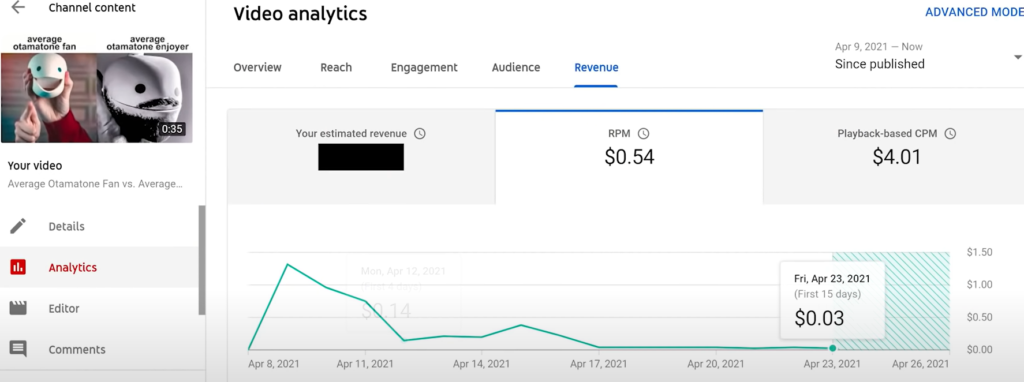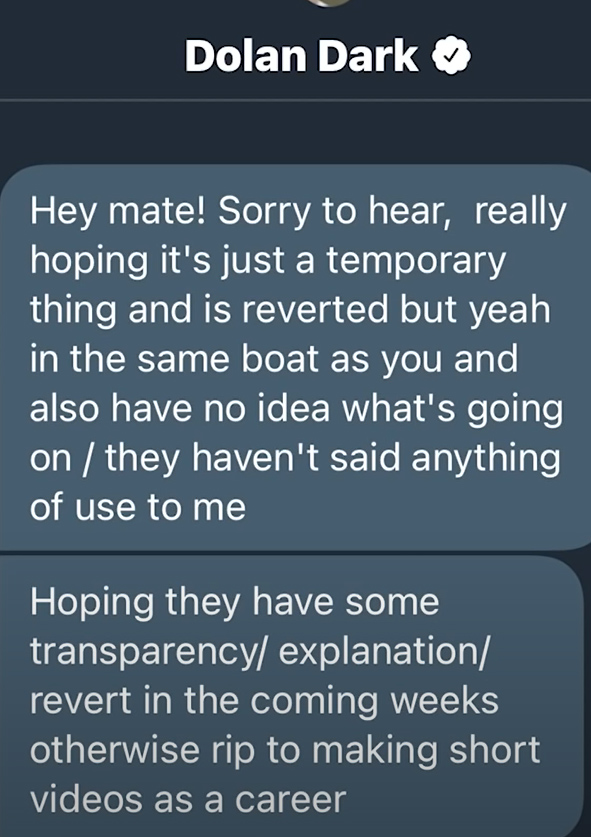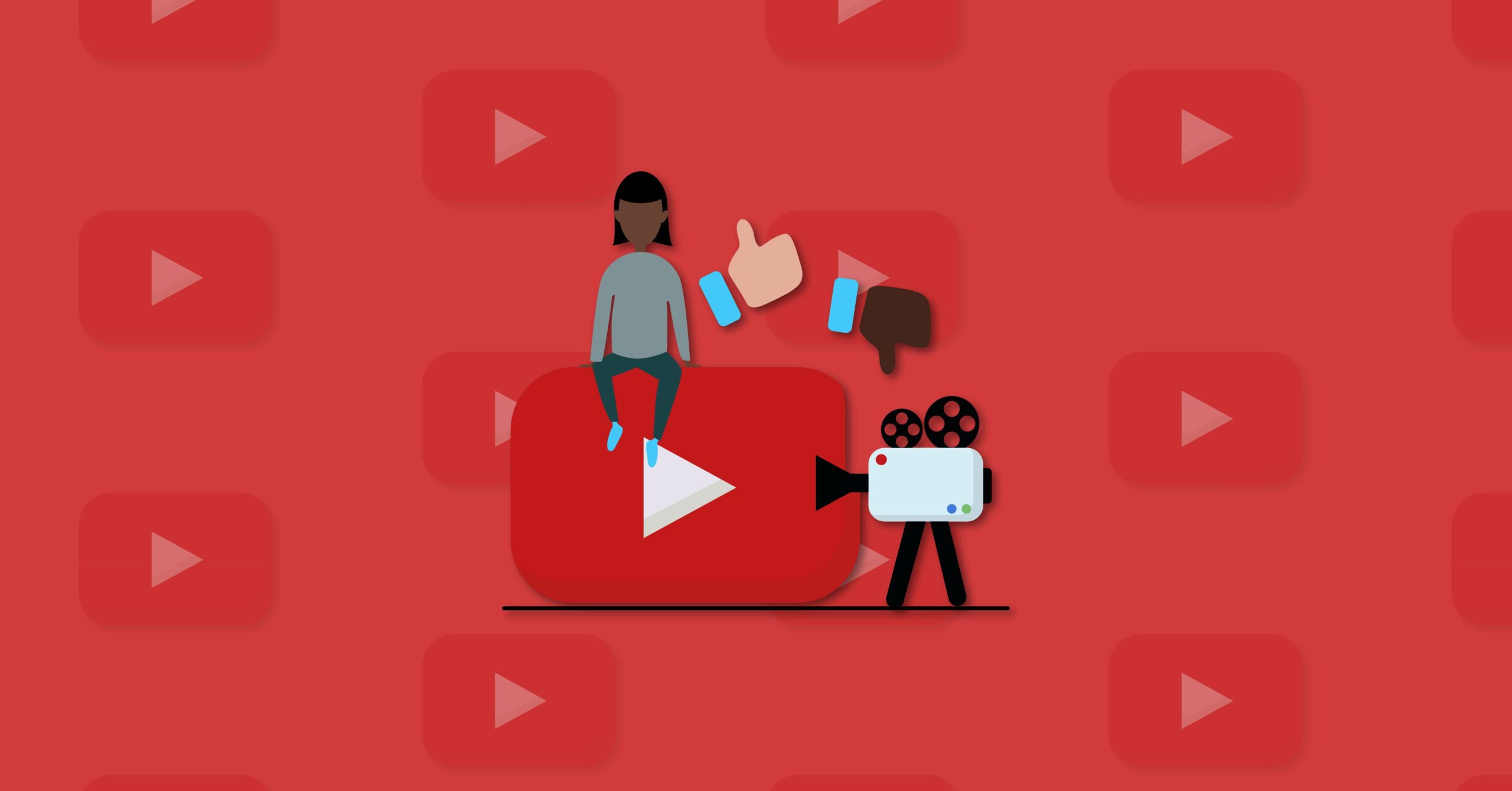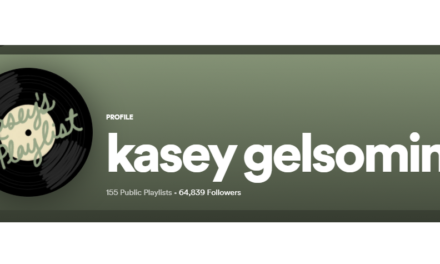What’s the news?
YouTube seems to have pulled back pre-roll ads for short videos.
Why do you say “seems”?
Well, YouTube isn’t explaining anything. We heard about it from TheRealSullyG (832K), a YouTube content creator who interrupted his regular programming to air his understandable rant, YouTube is Killing Our Channels. He calls it “shortpocalypse.”
What’s “shortpocalypse”?
Starting April 12, YouTube seems to have gutted pre-roll advertising for videos between 30 and 119 seconds. (Ads already weren’t possible for videos shorter than 30 seconds.)
In his revelatory video, TheRealSullyG used screenshots of several of his videos’ analytics to illustrate what’s happening. He makes his case, acknowledging fluctuations exist and noting he doesn’t think that’s what’s happening here.
On April 9, he published a 35-second video, earning $1.32 per 1K views. By April 12, the revenue dropped to 14 cents. On April 23, it went to three cents.
35-second @YouTube video earned $1.32 per 1K on April 9. It dropped to 14 cents on April 12. By April 23, it was 3 cents: @TheRealSullyG Share on X

In contrast, a 2:17 video earned $1.36 per 1K views on its first day, 85 cents on April 12, and $1.57 on April 23. Fluctuations? Yes. Plummeting to bottom out? No.


“Our channels are dying and you (YouTube) are turning a blind eye,” says TheRealSullyG.
What about other YouTuber content creators?
TheRealSullyG shares many fellow short-video content creators, including Dolan Dark (1.6M), have seen similar ad dive bombs. Dolan Dark got this reply to his ask for an explanation from TeamYouTube: “It may be less likely that ads will show up on very short videos as we improve viewer experience and revenue over the course of their session on YouTube.”
Dolan Dark tells the Real Sully G: “Hoping they have some transparency/explanation/revert in the coming weeks. (O)therwise RIP to short videos as a career.”

The Tilt Talk and Advice
What’s a short-video YouTuber to do?
Since YouTube isn’t talking, monitor your analytics closely to see if they make any changes based on the feedback from YouTubers who have such large followings. At the same time, start bringing your subscribers to the platforms you control.
How do you move your YouTube subscribers?
Tell them you’re considering a move from the platform (and explain why). Then, ask them to subscribe to your email list to be notified of any changes. Make that your call to action (CTA) in every video and every description. And don’t forget to add it to your about page.
What should you do with your videos?
It’s OK to use the YouTube platform, but don’t rely on YouTube as your primary revenue generator. Identify additional ways, like email, to engage your YouTube subscribers off the platform with a delivery vehicle you can control.
Instead of going for ad revenue as you do on YouTube, look for paid content models that you control like email or other subscription services. Consider offering both free and paid versions. (Use the free versions as marketing tools [i.e., teaser] for the paid subscription.)
Does this matter to content creators who aren’t on YouTube?
Most definitely. The story shared by TheRealSullyG isn’t surprising. We’ve seen it happen in one form or another on Facebook, LinkedIn, Twitter, etc. They control their platforms. And they can make changes or even cancel your account any time they want.
What’s the takeaway for all content entrepreneurs?
It can be smart to launch your content business on a third-party platform like YouTube where your prospective audience already is. But at the same time, you must have a plan for what to do to move your audience base once you’ve built it.
About the author
Ann regularly combines words and strategy for B2B, B2C, and nonprofits, continuing to live up to her high school nickname, Editor Ann. An IABC Communicator of the Year and founder of G Force Communication, Ann coaches and trains professionals in all things content. Connect with her on LinkedIn and Twitter.










